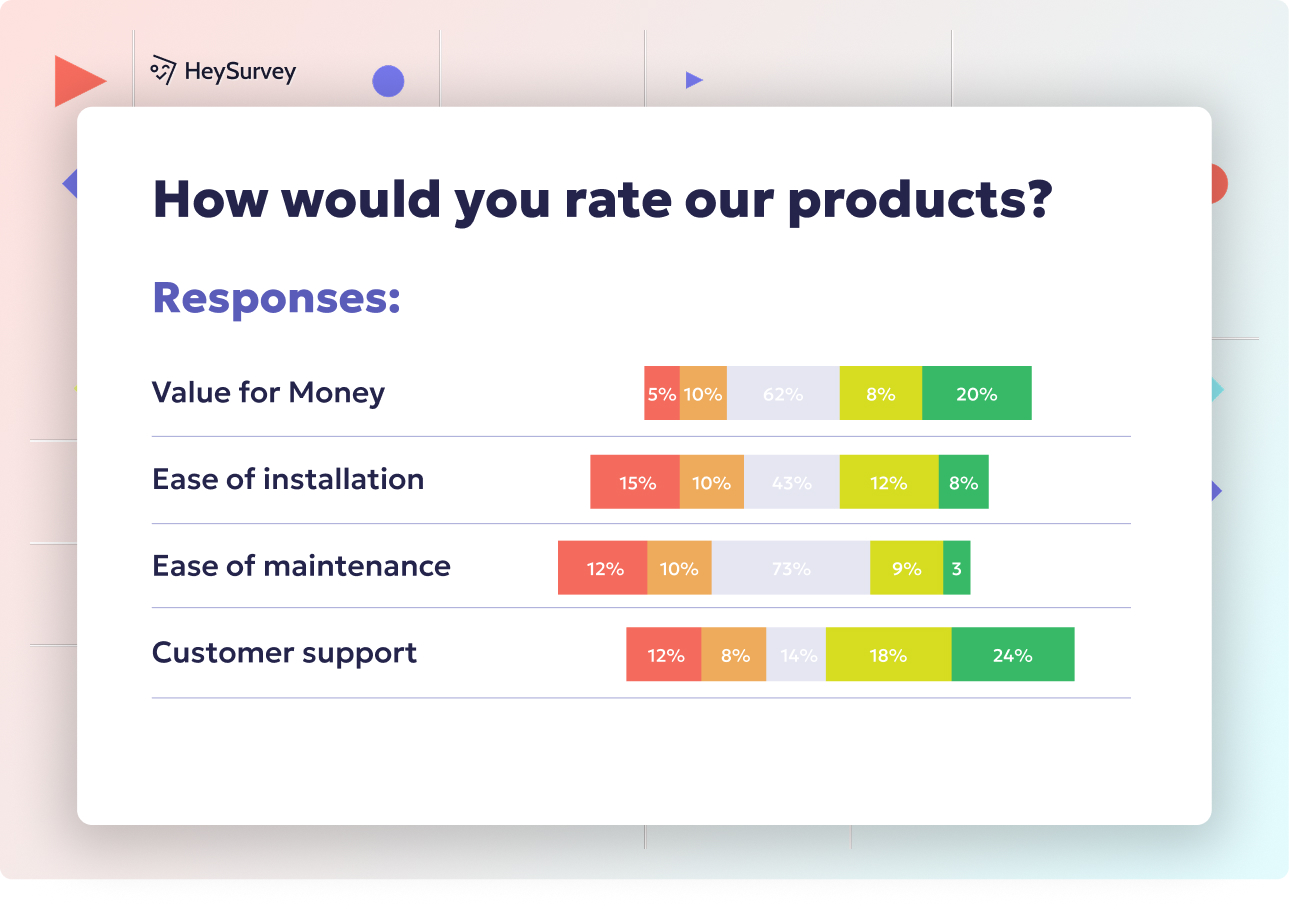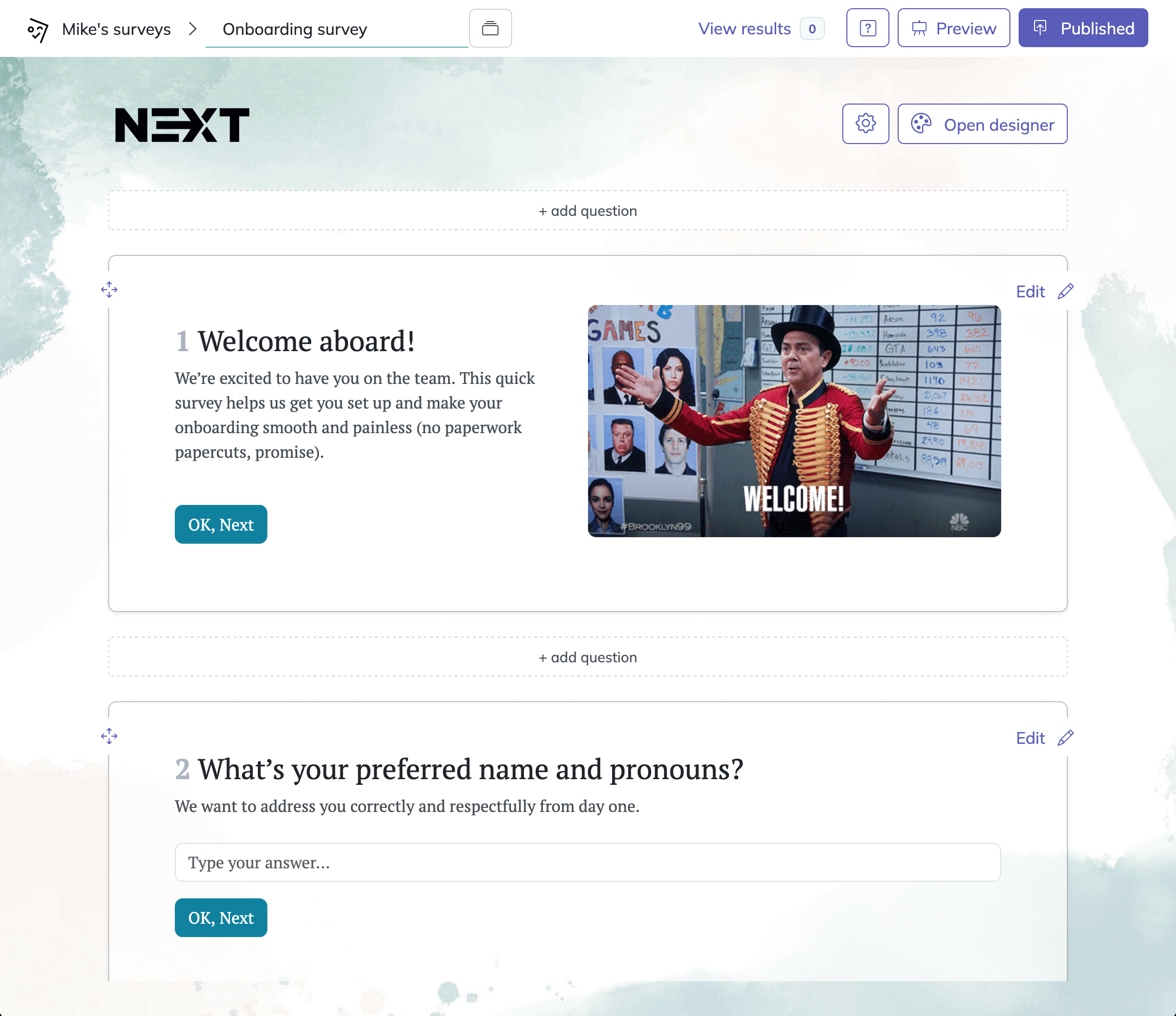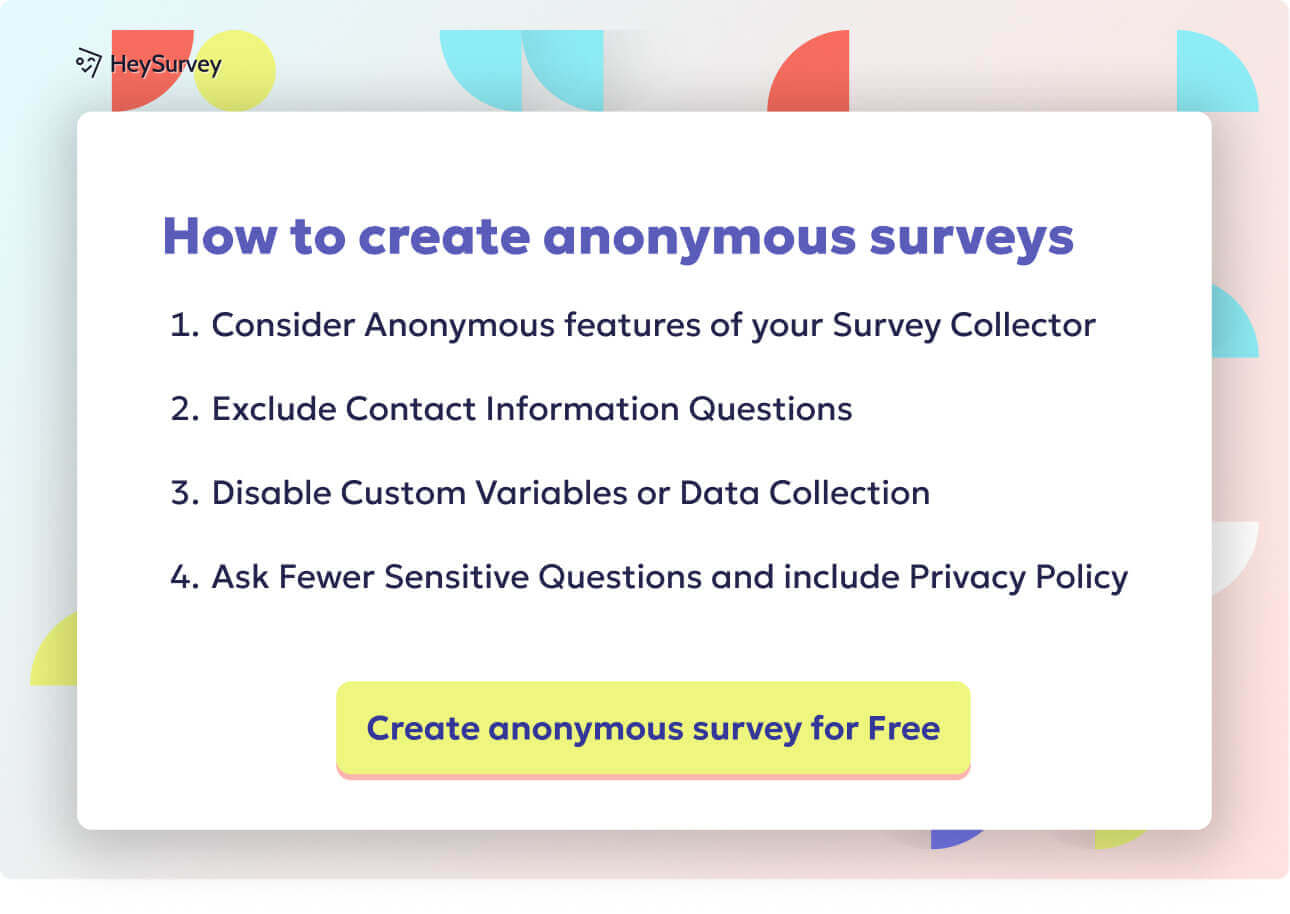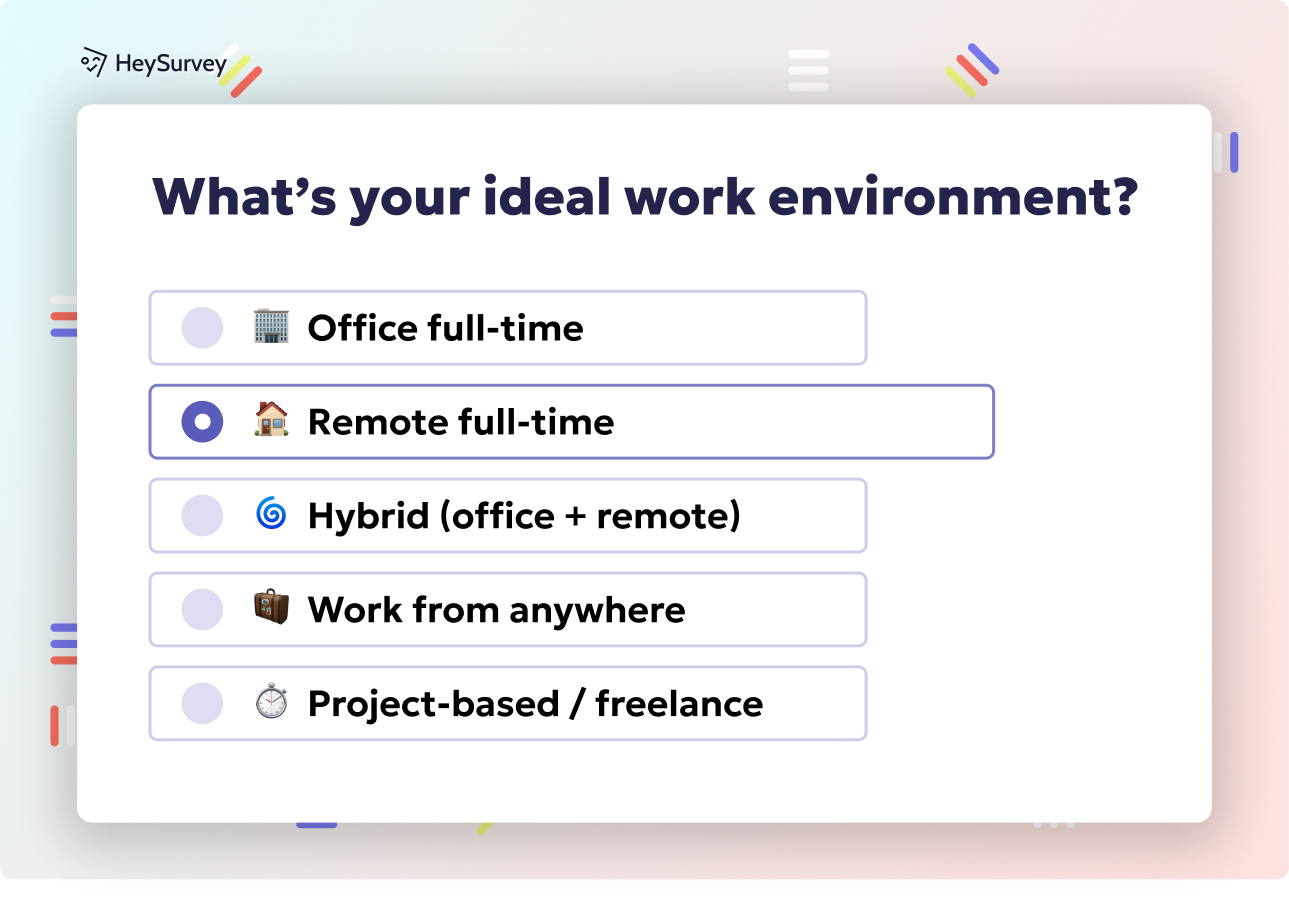31 Employee Mental Health Survey Questions to Boost Wellbeing
Discover 25+ employee mental health survey questions across diverse types to effectively gauge wellbeing, stress, burnout, and work-life balance.
Employee mental health surveys are a behind-the-scenes superpower for modern workplaces. In today's dynamic work environments, these surveys shine a light on issues that impact productivity, retention, and even risk management. Respecting legal boundaries like GDPR and HIPAA, they ensure employee anonymity while enabling organizations to do better. You'll discover pulse checks, annual assessments, stress surveys, burnout detectors, work-life balance measures, post-crisis questions, exit interview insights, and hands-on best practices—all to help you transform mental health strategy into action.
Pulse Mental Health Surveys
What Makes Pulse Surveys Unique?
Pulse mental health surveys are ultra-short, recurring check-ins that quickly gauge the atmosphere of your workplace. Designed to take less than 90 seconds, these surveys are often sent weekly or bi-weekly, helping you spot changes before they spiral. Think of them as a quick temperature check—nothing too deep, just a gentle tap on how folks are feeling.
These surveys gather feedback at rapid intervals, which means any looming trouble can be nipped in the bud. They’re perfect during times of organizational upheaval or when you just need to keep a finger on the pulse of your team's mood. Big changes, high-stress seasons, or team transitions are all moments when pulse surveys shine.
When and Why to Use Pulse Surveys
Companies use these short surveys to catch early warning signs of stress or disengagement, especially when teams are working under pressure, or after surprises like leadership changes. If your goal is to find patterns early or measure the impact of new initiatives, pulse surveys lead the way. They can highlight a dip in morale within days, not months.
These are particularly effective: - During merger integrations - After rolling out new policies - In times of workforce restructuring
Sample Pulse Survey Questions
Try framing your pulse questions with a scale or emoticon—you’ll get honest, quick responses. Good options include:
On a scale of 1-5, how supported do you feel at work this week?
How manageable was your workload over the past five days?
Did you experience work-related stress that affected your sleep?
Do you know where to find mental-health resources at [Company]?
How likely are you to recommend our workplace for mental-wellbeing?
Making Pulse Surveys Work
Want a pulse survey that employees will actually love? Keep these tricks in mind:
- Send them on the same day each week, building a habit that sticks.
- Keep each survey under 90 seconds—brevity is kindness, after all.
- Automate reminders to keep participation high, but don’t overdo it.
- Use language that’s friendly and approachable.
Pulse surveys keep your workplace pulse strong, ensuring you're never blindsided by a sudden dip in mental health or morale.
Regular pulse surveys can enhance employee engagement by providing timely feedback, fostering open communication, and building a culture of trust and transparency. (achievers.com)

How to Create Your Employee Mental Health Survey with HeySurvey in 3 Easy Steps
Creating a mental health survey with HeySurvey is a breeze—even if you’ve never made a survey before. Just follow these three simple steps to launch your first survey quickly, and then explore some bonus tips to make it look and work just right.
Step 1: Create a New Survey
Head over to HeySurvey and click Create New Survey.
Choose to start with a pre-built template (great for mental health topics) or start from an empty sheet if you want full control.
Give your survey an internal name to keep things organized—you can always change it later.
Step 2: Add Your Mental Health Questions
Click the Add Question button to insert new questions.
Pick the question type that fits your needs—Likert scale for rating feelings, multiple choice for selecting options, or text input where employees can share their thoughts.
Type your question text and add descriptions if needed for clarity.
Mark essential questions as required so respondents can’t skip them.
Feel free to add images or emojis to make the questions more engaging!
Step 3: Publish and Share Your Survey
Once you’ve added all your questions, click Preview to see how it looks from your employees’ perspective.
Make any design tweaks using the Designer Sidebar—change colors, fonts, or backgrounds to match your brand or company vibe.
When happy, hit Publish. You’ll get a sharable link to distribute via email, Slack, or embed right on your internal site.
Remember: you’ll need a HeySurvey account to publish and view responses.
Bonus Step 1: Apply Branding for a Professional Touch
Upload your company logo in the Branding Settings to make the survey instantly recognizable.
Customize color schemes and fonts so the survey feels like a smooth extension of your workspace.
Bonus Step 2: Define Survey Settings to Suit Your Needs
Set start and end dates to control when the survey is open.
Limit the number of responses if you want to focus on a specific group or timeframe.
Add a redirect URL to send employees to a thank-you page or mental health resources after completing the survey.
Bonus Step 3: Use Branching Logic for Smarter Surveys
Create question paths that change based on responses—if an employee rates high stress, follow-up questions can dig deeper.
Set multiple endings to tailor the closing message depending on how the survey went.
With these steps, you’ll have a sleek, thoughtful mental health survey ready to collect insightful employee feedback—all on a simple, intuitive platform. When you’re ready, click the template button below to jump-start your survey creation!
Comprehensive Annual Mental Health Assessments
Deep-Dive Approach to Employee Wellbeing
Unlike their speedy pulse counterparts, comprehensive annual mental health assessments go deep—really deep—into the employee experience. You’ll find 20-30 thoughtful questions exploring everything from exhaustion and workplace stress to wellbeing benefits.
Why do these matter? Annual surveys provide a foundation for benchmarking long-term trends, planning employee benefits, and conducting wide-angle cultural audits. They let businesses step back and see both the forest and the trees—what’s working, what isn’t, and what needs to change.
When to Opt for Comprehensive Assessments
These big surveys work best: - When you want to set a data-driven baseline for mental wellbeing. - As part of annual reviews, especially linked to benefit design. - If you need to compare changes year-on-year or across teams. - When planning long-term wellness initiatives or scoring company culture.
Annual surveys are great at detecting slow-burn issues that weekly checks might miss. They make sure your culture is moving in the right direction, not just the trending direction.
Sample Comprehensive Survey Questions
Effective questions cover benefits, culture, leadership, and beyond:
In the last 12 months, how often have you felt emotionally exhausted at work?
Rate the adequacy of our mental-health benefits (EAP, counseling, teletherapy).
How safe do you feel discussing personal stress with your manager?
Which workplace factors most impact your mental health? (Multi-select.)
What new wellbeing initiatives would you value next year?
Protecting Anonymity and Analyzing Trends
To build trust, guarantee anonymity and make it clear that no individual responses are traced back to staff. Use a third-party survey tool if possible, and always encrypt results. Compare year-to-year responses to spot subtle shifts: Has exhaustion crept up? Are benefits lagging?
Some smart strategies to maximize value: - Publish only aggregate data. - Invite qualitative feedback alongside ratings. - Use summary dashboards to spot at-risk departments.
Comprehensive annual assessments allow organizations to turn rich insights into lifelong improvements.
A comprehensive review identified 66 validated mental health and well-being assessments suitable for workplace use, aiding employers in strategic planning and evaluation of mental health initiatives. (pubmed.ncbi.nlm.nih.gov)
Stress Level Check-In Surveys
Fast Feedback During Crunch Time
Stress level check-in surveys are all about catching employee strain during notoriously tough work seasons—think tax time, product blitzes, or holiday retail rush. These are short, focused, and timed with precision: just when things are hottest.
You deploy them right before, during, or immediately after high-pressure periods. It’s like asking, ‘How’s the water?’ before jumping into the pool—you don’t want to discover sharks after you’re already wet.
Pinpointing High-Stress Moments
Examples of when to use these flash surveys: - Quarterly finance and audit periods. - Pre- and post-product launches. - End-of-year retail surges. - Run-up to company events or big deadlines.
Frequent stress check-ins help organizations respond swiftly—whether that’s providing more resources, a day off, or just an empathetic ear.
Sample Stress Level Survey Questions
Guage stress with direct prompts:
Current stress level: None / Mild / Moderate / High / Severe.
Which project is causing the most pressure?
Do you have the resources you need to manage stress right now?
Have you taken a full lunch break in the past week?
Would speaking with a stress-management coach help you?
Turning Insights Into Action
Don’t just check in—follow up! Tailor the frequency based on peak stress points, not just the calendar. When you see rising stress scores, micro-interventions like short workshops or meditation breaks can make a world of difference.
Recommended tactics: - Nudge managers to act on flagged results. - Provide extra break time during stressful periods. - Deliver well-timed reminders about available resources.
Adaptive and compassionate, stress check-in surveys help you catch burnout before it grows roots.
Burnout Risk Surveys
Spotting Burnout Before It Blows Up
Burnout risk surveys are sharp tools for detecting chronic exhaustion, cynicism, and dwindling effectiveness. Inspired by research like the Maslach Burnout Inventory, these surveys dive into deeper psychological waters, targeting industries with high overtime and remote-first setups.
Use these when turnover rises, employees report feeling “checked out,” or persistent overtime becomes the norm. The best organizations catch small fires before they spread to the whole building.
Identifying When to Screen for Burnout
Deploy burnout surveys in situations like: - Rapid staff turnovers or widespread discontent. - Mostly remote or hybrid teams pushing long hours. - Post-crunch season fatigue or repeated late nights.
You’ll have a powerful sense of how close your people are to the edge—and whether it’s time to intervene.
Sample Burnout Survey Questions
Capture early burnout signals with these questions:
I feel emotionally drained from my work. (Never → Always)
I’ve become less interested in my job since last quarter.
I feel I’m achieving worthwhile progress at work.
How often do you work outside normal hours?
Have you considered leaving due to workload?
Diagnose, Don't Just Detect
Interpretation is everything: set thresholds for red flags (for example, frequent “Always” responses), and provide escalation paths for those at risk. Never use diagnostic wording, but keep an eye out for clusters of concern that require follow-up.
Some takeaways for effective action: - Trust indicators of chronic fatigue or lost motivation. - Ensure flagged responses get quick, confidential attention. - Empower managers with resources and next steps.
Burnout survey results offer a lifeline—if you’re brave enough to listen.
The Maslach Burnout Inventory (MBI) is widely used to assess burnout through three dimensions: emotional exhaustion, depersonalization, and reduced personal accomplishment. (en.wikipedia.org)
Work-Life Balance Surveys
Exploring Balance in the Age of Flexibility
Work-life balance surveys gauge how easily employees can juggle schedules, rest, and personal priorities. They’re essential in hybrid or remote settings, and after policy changes affecting working patterns or hours.
The goal is simple: make sure life outside work isn’t being steamrolled by job demands. If meetings stretch into the evening or PTO feels off-limits, a survey helps surface hidden stressors.
When Balance Surveys Are Essential
Use these assessments: - After a remote-work pivot or major policy shift. - While rolling out hybrid models or changing core hours. - To check that proposed “flexibility” is making life easier, not harder.
Happy, balanced employees are more likely to stick around—and fewer surprise resignations show up in your inbox.
Sample Work-Life Balance Survey Questions
Gauge balance with targeted questions:
My current schedule allows me to handle personal responsibilities.
Meetings outside core hours disrupt my home life. (Agree/Disagree)
I can disconnect from work communications after hours.
How satisfied are you with PTO approval speed?
Rate your overall work-life harmony on a 1-10 scale.
Policy Polishing for Better Balance
Feedback is only useful if acted on! Review policies and promote asynchronous work where possible. Encouraging flex-hours, clear “out of office” norms, and speedy PTO approvals builds trust and freedom.
Consider these enhancement ideas: - Offer core hours for must-have meetings. - Normalize signing off after hours—no more after-dinner emails. - Highlight examples of good boundaries by senior leaders.
A sense of harmony at home leads straight to energy and focus at work.
Post-Crisis or Return-to-Work Mental Health Surveys
A Compassionate Check-In After the Storm
Post-crisis or return-to-work surveys offer employees a chance to reflect and regroup after tough times. Layoffs, disasters, pandemics, or long-term leaves all warrant a dedicated check-in. These surveys show you care—and want to spot lingering anxieties or obstacles to thriving.
These one-off surveys can reassure employees that their feelings about transitions, safety, or leadership are heard and valued. And they help leaders see what’s working, what isn’t, and what support is really needed.
When to Deploy Return-to-Work Surveys
You’ll want this approach after: - Layoffs or significant restructuring. - Natural disasters or public health crises. - Extended remote work or long leaves of absence.
Returning to normal takes time and care, and honest feedback helps you do it right.
Sample Post-Crisis Survey Questions
Ask questions that address re-entry concerns:
How safe do you feel returning to the physical workplace?
What concerns you most about the transition back?
Do you need accommodations to ease re-entry?
How confident are you in company leadership during this period?
Which resources would help you feel supported?
Follow-Up: More Than A Survey
A trauma-informed lens is key here. Communicate clearly, avoid pressure, and follow up with real action based on responses.
Best post-crisis practices include: - Transparent updates about next steps. - Listening circles or employee support groups. - Personalized offers of accommodations.
Acting with empathy after a crisis cements trust and helps workplaces rebuild with heart.
Exit Interview Mental Health Surveys
Mental Health Insights Before the Farewell
Adding a mental health module to exit interviews uncovers subtle but powerful reasons behind turnover. This approach lets you know if stress, burnout, or lack of support played a role—so you can refine your culture for those who remain.
It’s not about guilt-tripping leavers, but about invisible trends: are employees leaving in droves because your workplace is too stressful or unsupportive?
When and Why to Add Mental Health Questions
Include these in situations such as: - Exit interviews after unexpected resignations. - Reviewing why certain departments see higher attrition. - Understanding turnover from a wellbeing perspective.
Fresh, honest feedback from departing staff can improve your retention strategies for everyone else.
Sample Exit Mental Health Survey Questions
Gain deep insight with the following:
Did mental-health concerns influence your decision to leave?
How effectively did managers support your wellbeing?
Which stressors were most significant in your role?
Were you aware of mental-health resources here?
What could we improve to support future employees’ wellbeing?
Ensure Confidentiality and Drive Action
Always reiterate that answers are confidential—and never shared with managers. Blend findings into your stay-interview strategy, so you fix problems before more people walk out the door.
Tips for integrating feedback: - Look for patterns in exit responses. - Act fast on recurring themes. - Share changes with your broader team to reinforce trust.
When employees see action, trust and morale get a second wind—even after goodbyes.
Best Practices: Dos & Don’ts for Employee Mental Health Surveys
Dos for Stellar Employee Surveys
Set your surveys up for success with these must-dos:
- Keep surveys anonymous to foster open feedback.
- Clearly explain survey purpose and next steps to all participants.
- Always close feedback loops: share results and explain actions.
- Use a mix of quantitative ratings and qualitative comments for richer insights.
- Act promptly on survey data—don’t just collect and forget.
A mobile-first design, inclusive language, and transparent follow-up all boost participation and trust.
Don’ts That Derail Survey Impact
Avoid rookie mistakes that erode trust:
- Never use diagnostic language or suggest medical advice.
- Don’t link survey answers to individual performance reviews.
- Avoid survey overload—hammering employees with too many surveys leads to apathy or worse.
Technical safety matters: encrypt data, use skip logic to hide unnecessary questions, and prioritize easy access on any device.
Designing for Success: A Handy Checklist
- Mobile-friendly interface for easy completion on the go.
- Lenient deadlines and friendly reminder emails.
- A promise (and proof) that feedback leads to meaningful change.
- Regular review of survey design to ensure continual improvement.
A finely-tuned survey system helps every voice be heard—without added stress.
Conclusion & Next Steps
Employee mental health surveys are powerful tools when used with heart, strategy, and a dash of courage. Acting on survey results is what transforms feedback into real, positive change. Start with a pilot survey, share results openly, and regularly review your mental health toolkit for gaps. Curious for more tips? Check out our EAP guide or browse ideas to boost employee engagement today.
Related Employee Survey Surveys

29 Essential Post Mortem Survey Questions for Project Success
Discover 25+ essential post mortem survey questions to improve projects, boost team morale, and d...

31 Change Readiness Survey Questions to Boost Your Success
Discover 25+ sample change readiness survey questions to assess attitudes, barriers, and confiden...

31 Retreat Survey Questions to Collect Actionable Feedback
Discover 26 essential retreat survey questions to gather actionable feedback before, during, and ...

